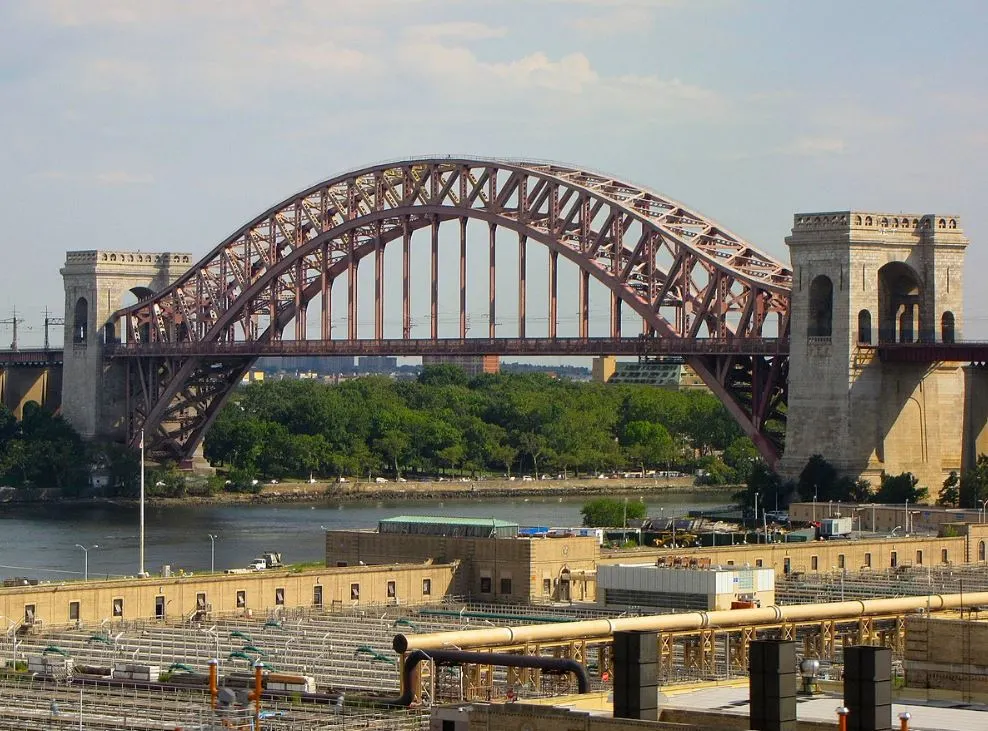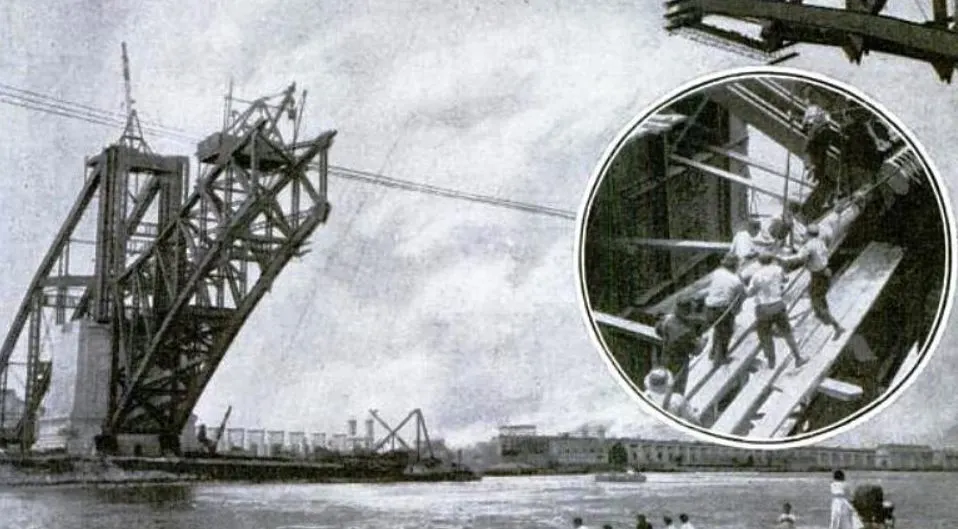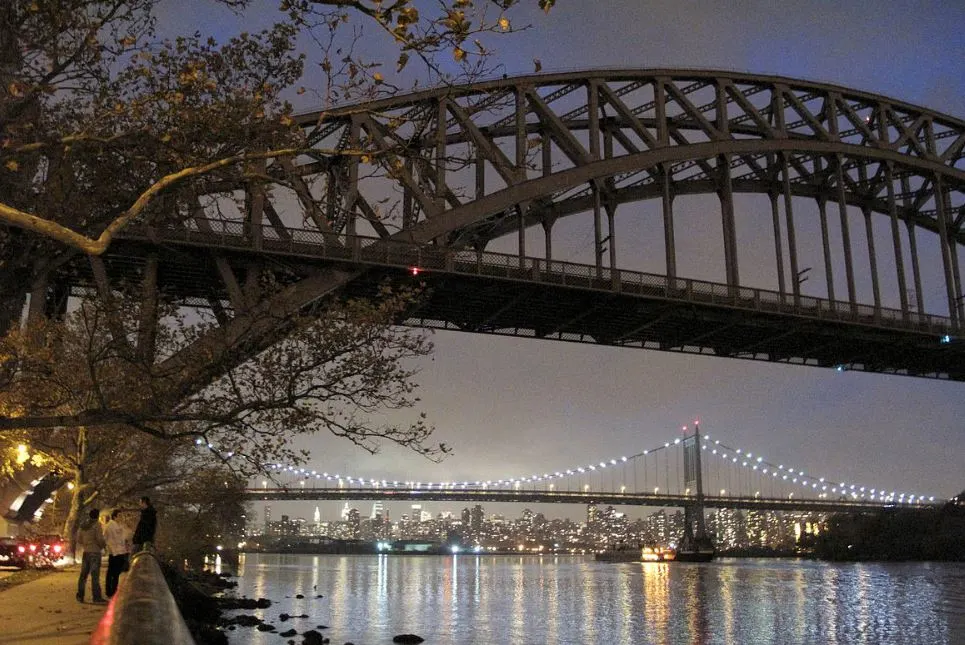Very few bridges in New York City have been as influential as this remarkable historic bridge that spans a narrow strait of the East River.
It features a distinctive arch that served as the inspiration for two famous bridges in England and Australia.
The construction of this bridge was an interesting event in architectural history and today, the bridge remains one of New York’s most fascinating landmarks.
Below, you’ll discover some of the most interesting facts about the Hell Gate Bridge.
1. It connects the Hell Gate Strait and connects Queens and Manhatten
The Hell Gate Bridge is a steel through-arch railroad bridge that crosses the Hell Gate, a narrow strait of the East River in New York City.
It connects the Astoria neighborhood in Queens with two joined islands known as Randalls and Wards Islands in Manhattan.
These two islands were once separated from each other by another strait called the Little Hell Gate but this inlet was filled in the 1960s.
Manhatten is just to the west of the bridge and as you can see from the image below, it’s located right next to the Robert F. Kennedy Bridge.
This is another famous bridge in New York that is commonly referred to as the Triborough Bridge. This structure carries 8 lanes of vehicular traffic and a sidewalk on the northeastern side.

2. The idea to build the bridge came about in the early 20th century

New York and many other cities in the northeast of the United States were booming in the late 19th century. The need for more railroads was imminent because of this.
The idea to build a bridge here came about in the early 1900s when it was suggested to connect the Pennsylvania Railroad (PRR) with the New York, New Haven, and Hartford Railroad (NH).
The initial idea was to build a bridge that carries 4 tracks but this was reduced to just 3 tracks in the final plans.
Today, the bridge is owned and operated by Amtrak, the common name of the National Railroad Passenger Corporation.

3. This amazing feat of engineering took 4 and a half years to build
The bridge was designed by a civil engineer named Gustav Lindenthal (1850-1935). He was born in Brno, a city in the Czech Republic that was part of the Austrian Empire back then.
He initially started his career in Vienna but decided to emigrate to the United States in 1874. This was a great idea because he designed many notable bridges in the country, including several in the Pittsburgh area.

He earned the commission to design the Hell Gate Bridge in 1904 after he had founded the North River Bridge Company in New York in the 1880s.
His design was so meticulously executed during construction that there was only a gap of 7.9 millimeters (0.32 inches) when they lifted the final part of the main span into place.
The first stone of the bridge was laid on March 1, 1912, and it was completed on September 30, 1916. The first trains crossed the bridge on March 9, 1917.

4. How long is the Hell Gate Bridge in New York City?
The steel through-arch bridge that crosses the Hell Gate is the largest of a series of bridges and approaches that form the Hell Gate railroad viaduct.
This section has a width of 30.5 meters (100 feet), a maximum height of 41.1 meters (135 feet) above the water below, and the longest span has a length of 298 meters (978 feet).
Upon completion, the Hell Gate Bridge was the world’s longest steel arch bridge and it held this record until the Bayonne Bridge in New Jersey was completed in 1931.
The total length of the bridge, including the approaches and truss bridges in other sections, is 5.3 kilometers (3.2 miles).

5. There’s a particular reason why the bridge’s piers were made of concrete
The steel piers that support the bridge weren’t the first choice of engineer Gustav Lindenthal. He initially planned to use steel lattice structures.
The New York House of Refuge, the first juvenile detention center in the United States, was located on Randalls Island.
Because the authorities feared that inmates would escape the island by climbing the steel structures, the design was changed to smooth concrete piers.

6. The bridge was repainted in the 1990s but this wasn’t a great success
The bridge’s durability is second to none and some sources have suggested that the Hell Gate Bridge would still stand after 1,000 years.
The same can’t be said about the repainting job that was conducted during the 1990s. It was the first time that it was repainted and it wasn’t a great success, to say the least.
The dark red color scheme was proudly referred to as “Hell Gate Red” but it started fading the moment it was applied to the bridge. Today, the color has faded so much that it looks rather bleak compared to its name.

7. Its tracks are part of the busiest passenger rail line in the United States
The bridge is not only a great feat of engineering but also a very important link in the busiest railroad system in the United States known as the “Northeast Corridor.”
You can travel from Boston to Washington D.C. using this line and pass by other major cities such as Providence, New Haven, Stamford, New York City, Philadelphia, Wilmington, and Baltimore along the way.
That’s why the Northeast megalopolis of the United States is the largest Megalopolis in the world!

8. It served as the inspiration for two iconic bridges in England and Australia
The design of the Hell gate Bridge was revolutionary at the time and that’s why it inspired several other bridges all around the world.
The first notable example of a bridge that looks very similar is the Tyne Bridge in the northeast of England. It was completed in 1928 and connects Newcastle Upon Tyne with Gateshead.

The most famous bridge that was inspired by the Hell gate Bridge is one of the most stunning landmarks in Sydney, New South Wales, Australia.
Completed in 1932, the Syndey Harbour Bridge is one of the most iconic bridges in the world.

